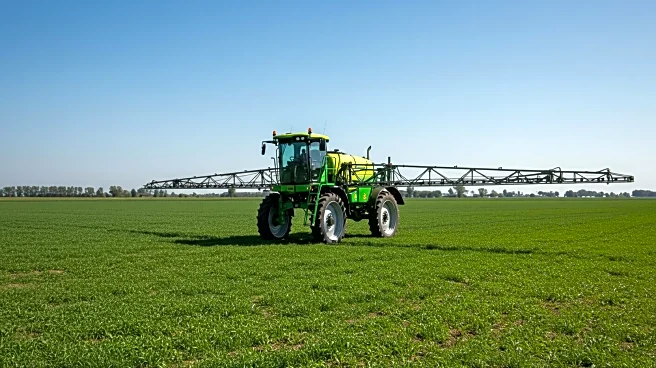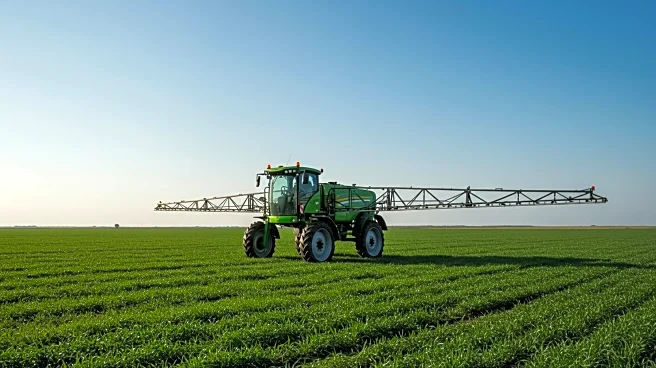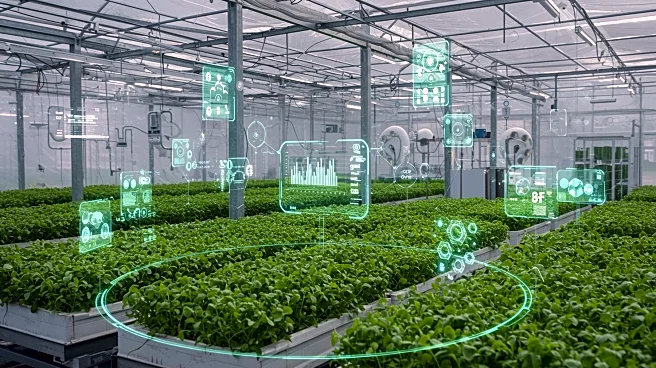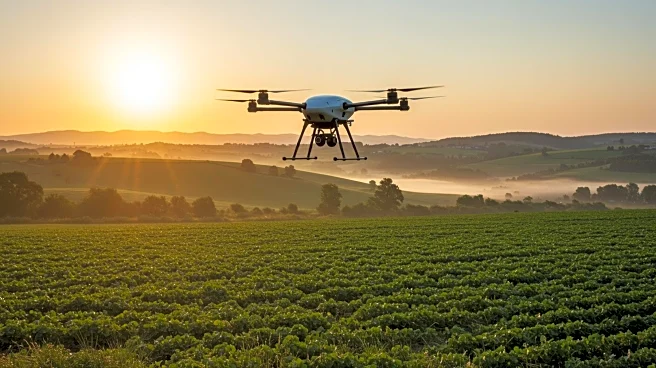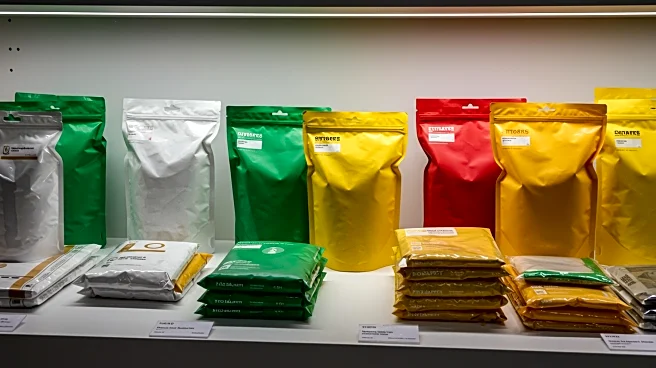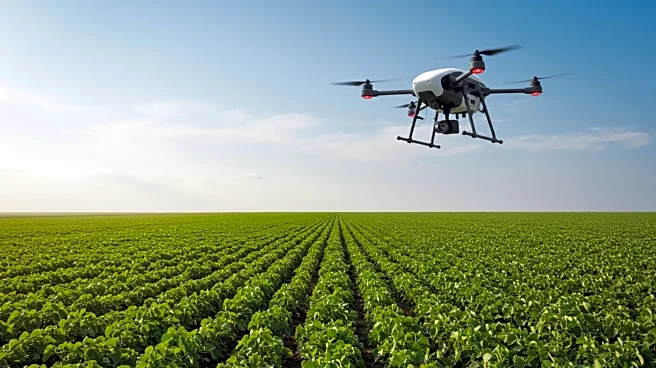What's Happening?
The Agricultural Sprayers Market is expected to grow from USD 5.10 billion in 2025 to USD 7.08 billion by 2030, driven by smart-farming subsidies and precision technologies. This growth reflects the increasing demand for efficient pesticide and fertilizer application as global food demand rises. Farmers are adopting advanced equipment such as drone sprayers, battery-powered units, and AI-enabled platforms to reduce labor dependency and improve coverage. Regional government initiatives, particularly in Asia-Pacific, Europe, and North America, are driving adoption by providing subsidies, tax incentives, and policy support for precision agriculture machinery.
Why It's Important?
The expansion of the Agricultural Sprayers Market is crucial for enhancing agricultural productivity and sustainability. As global food demand increases, efficient spraying technologies help optimize resource use and reduce environmental impact. The adoption of precision agriculture tools can lead to better crop yields and lower input costs, benefiting farmers economically. Additionally, government support for these technologies underscores the importance of innovation in addressing food security challenges and promoting sustainable farming practices.
What's Next?
Future developments may include further advancements in AI and sensor technologies to enhance precision spraying capabilities. Governments are likely to continue supporting these innovations through subsidies and policy measures. The market may also see increased competition among manufacturers as they strive to develop more efficient and cost-effective solutions. Farmers and industry stakeholders will need to adapt to these changes to maximize the benefits of new technologies.
